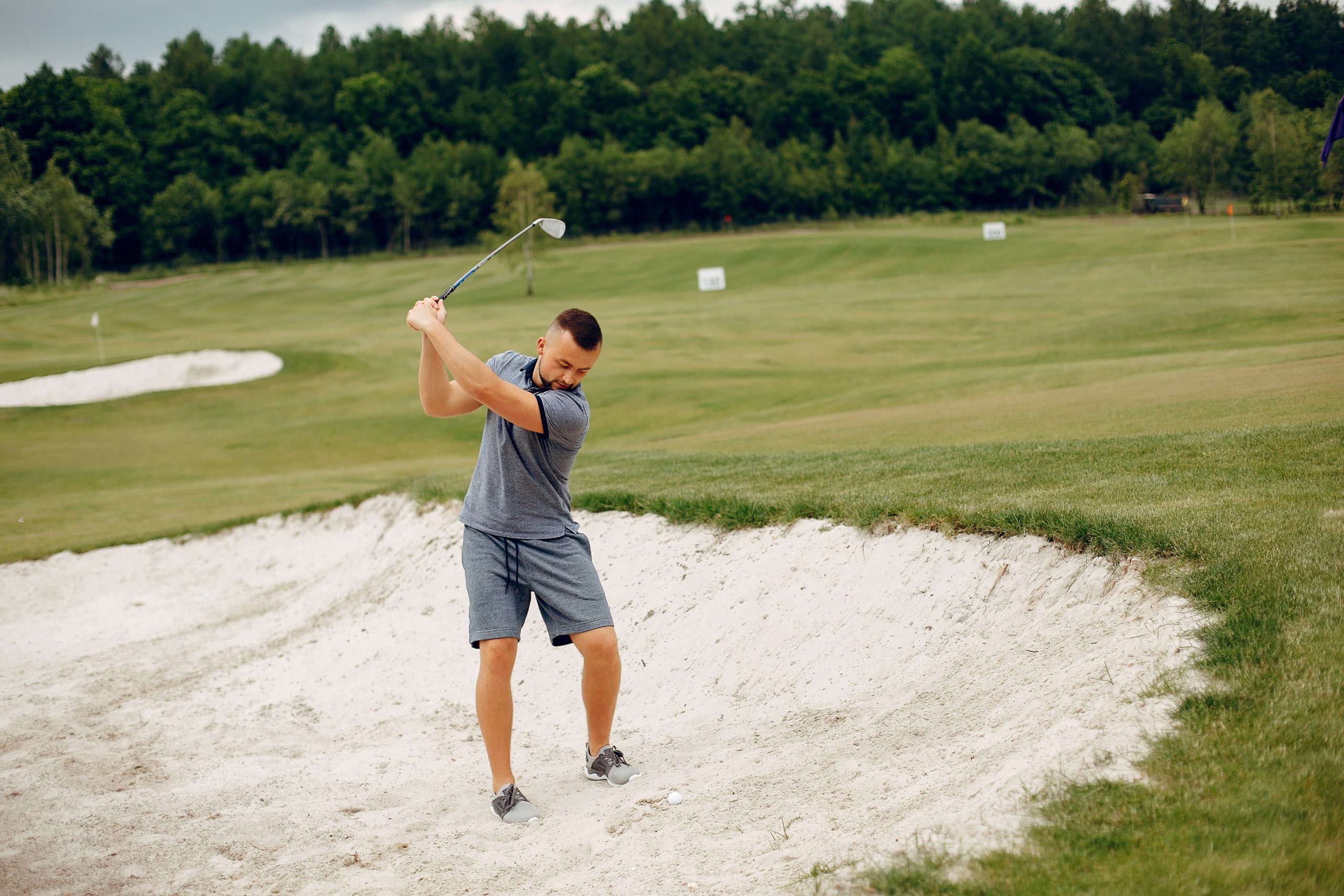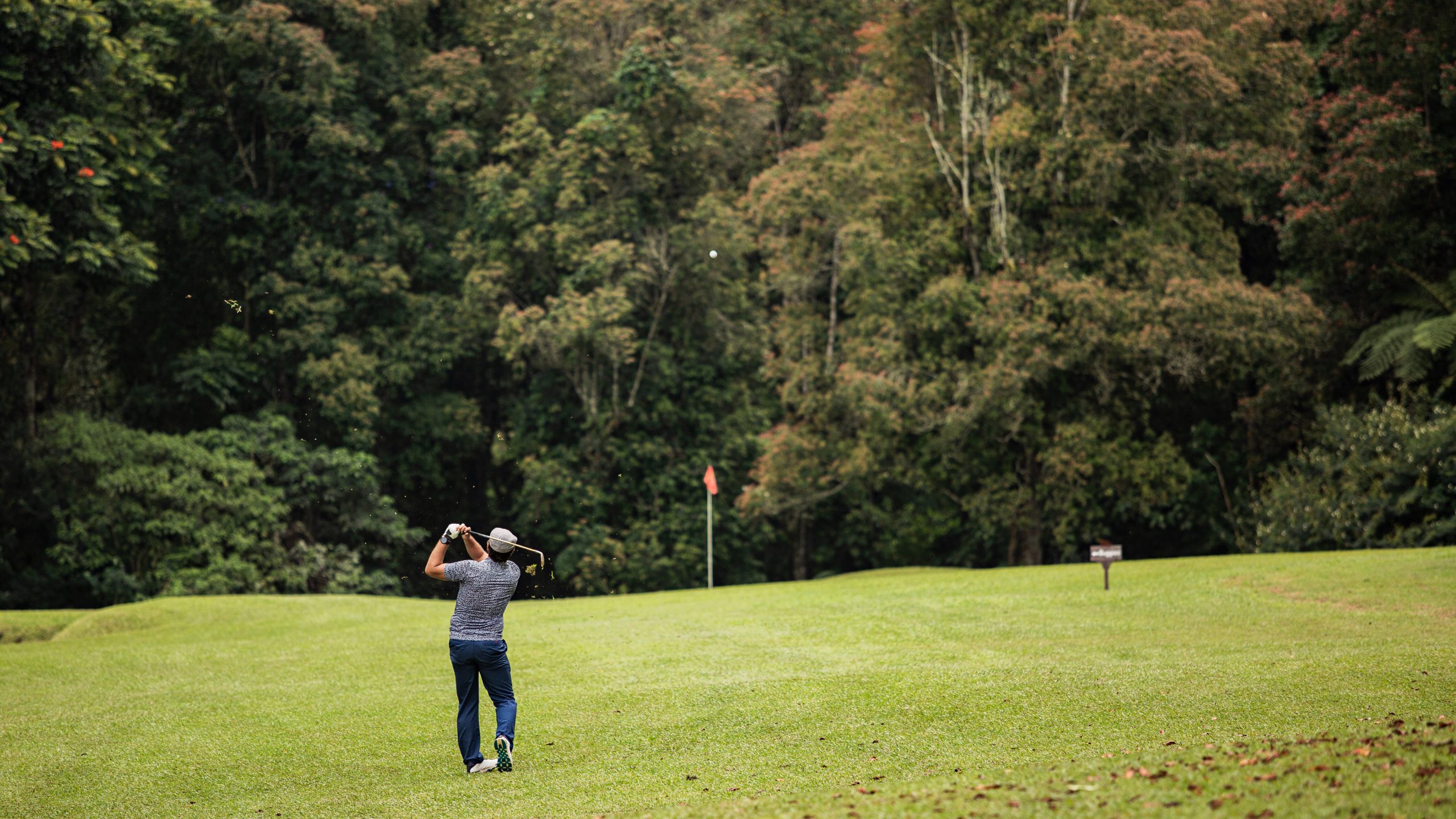
In today’s post, we’re going in-depth on the 60 degree wedge and fill you in on 10 things you may not have known about one of the most popular lob wedge on the market.
If you want to know more about the 60 degree wedge, and more specifically:
Then you’ve come to the right place.
So let’s dive right in.
What is a 60 Degree Wedge?
As the name suggests, a 60 degree wedge, or what many golfers refer to as a “lob wedge”, is a wedge that has 60 degrees of loft, meaning that you can expect that the ball’s trajectory (on impact) will be high.
Typically anytime you use a high lofted club (58 degrees or higher) you’re purposely trying to get the ball into the air, either to avoid any obstacles between you and the green or to get out of a bunker.
What is a Lob Wedge?
A lob wedge is just another name golfers use to indicate a higher lofted wedge which usually ranges between 58-62 degrees of loft.
It’s important to note that although lob wedges range between 58-62 degrees, the 60 degree wedge is one of the more popular options for amateur golfers and professional tour players.
Regardless of which degree you use, the main intent for a lob wedge is to quickly “pop”, or “lob”, the ball into the air as quickly as possible and land it softly on the green without much roll.
What is a 60 Degree Wedge or Lob Wedge Used For?
A 60 degree wedge, or any lob wedge between 58-62 degrees, is meant to launch the ball in the air with a high trajectory and land it softly on the green.
Using a lower degree wedge such as a sand, gap, or even pitch, can still launch the ball in the air (albeit at a lower trajectory) but will have a further travel distance once it lands as compared to a lob wedge.
When To Use 60 Degree Wedge?

Knowing that the 60 degree wedge has a high trajectory can help you get out of certain situations or put you in amazing positions depending on what you’re trying to achieve.
Here are some examples:
- Avoiding bunkers or any obstacles between you and the green
- Being on the short side of the green and you need the ball to stop or with very little roll, also known as a flop shot
- On a declining hill which requires a higher lofted club to compensate
- Getting out of bunkers
There are countless ways to use a lob wedge and depending on the situation it can literally save you a few strokes. That’s why it’s considered a staple, specifically 60 degrees, for many tour players.
Is It Hard To Hit A 60 Degree Wedge?
Hitting a 60 degree wedge is no different than hitting a sand wedge or gap wedge but you need to have a level of certainty and confidence when using it.
Take for example this scenario.
Imagine you’re 25 yards from the pin and between you and the green, is a bunker. In addition to the sand trap, you’re on the short side of the pin.
Now you reach for your trusty 60 degree wedge and set up.
Would you feel confident hitting this shot knowing that if you thin the shot you’ll launch the ball way past the pin and potentially off of the long side of the green?
OR…
If you fat/chunk the shot, it’ll land safely in the bunker?
Although this situation is rare and may never happen to you, the consequences of thinning or chunking using a 60 degree wedge is real regardless if there’s a bunker or not.
Being that close to the green means you need to be confident in your shot or else you’ll end up being too short or too far causing additional strokes on your scorecard.
60 Degree Wedge Distance – How Far To Hit A Lob Wedge?
Many tour players can hit (carry) their 60 degree wedge between 95 to 115 yards whereas amateurs can range between 40 to 80 yards.
Although distance is important, knowing your carry distance is much more valuable.
It’s better to be accurate with your aim and distance, than trying to crank out additional yards and sacrifice accuracy.
Do Beginners Need A Lob Wedge?
Straight answer is no.

Just hear me out, chief.
Beginner’s don’t need a lob wedge as they should be focusing on their swing and getting consistent contact with the ball.
To clarify, we categorize beginners as golfers who have a high handicap (ie. 25+).
A beginner golfer can get away with using one of the three wedges – gap, sand, or lob. They don’t necessarily need to have all three in the beginning of their golf journey but they need at least one, that’s outside of their pitching wedge, to cover the shorter distances.
Once they’re getting consistent contact with the ball and has had practice with one of the wedges (ie. has dialed in their distance and accuracy), then we’d suggest getting the other degrees to complete the wedge set.
How Will a 60 Degree Wedge Improve My Game?
Whether you’re a seasoned golfer or just breaking 100, having a 60 degree wedge will improve how you see the game as well as help shave a few strokes off your scorecard.
As mentioned earlier, amateur golfers can hit a 60 degree wedge between 40 to 80 yards, whereas pros can hit it anywhere between 95 and 115.
Regardless of distance, it’s primarily used for the short game and once you’re able to master it (ie. knowing and controlling your distance, pitching, chipping, etc.) the game will be infinitely more fun.
Let’s look at an example.

Imagine you’re on a Par 4, 320 yards. You crank your driver 250 yards and now left with 70 yards to the pin.
Without knowing your distances on each wedge, you could potentially be short or long 15-20 yards from the pin. What could have been a birdie opportunity, can easily be a par or more realistically a bogey for most people.
As stated by David Pelz in the Short Game Bible, “60% to 65% of all golf shots occur inside 100 yards of the hole. More important, about 80% of the shots golfers lose to par occur inside 100 yards.” The sheer amount of shots within 100 yards should prompt you to start practicing with your short game and more importantly, your wedges.
Although the 60 degree wedge won’t drastically improve your game, the process on learning how to use it and when to use it, will.
What Bounce For A 60 Degree Wedge?
If you’re unfamiliar with the “bounce” of a 60 degree wedge or what it is and what it does, here’s a quick run-down.
When you place the sole of the wedge on the ground, the “bounce” would be the angle between the ground and the leading edge of the wedge.
The grind, located beside the sole of the wedge, is the area that comes in contact with the ground and glides across the surface as you’re hitting the ball.
There are three types of “bounce” or “bounce angles” – low, mid, and high with each having their own distinctive advantages and disadvantages.

Low bounce wedges range between 4-6 degrees of bounce and are typically used on firm ground with tight lies or bunkers with harder sand. These wedges are more for golfers that can cleanly strike the ball as there isn’t much bounce to help. If you’re struggling with precision, then a medium or high bounce wedge might suit you better.
Mid bounce, or standard bounce, wedges range between 7-12 degrees of bounce and are typically used on normal to firm ground with tight lies. Due to it’s angle, the medium bounce wedges are considered more versatile and more popular.
High bounce wedges range between 12 degrees of bounce or more and are typically used for softer ground, bad/rough lies, or bunkers with softer sand. Due to the high bounce angle, golfers can generate a lot of spin which helps with flop shots.
If you’re interested to learn more about bounce and what it does, check out Vokey’s website (no affiliation), one of the premier brands of golf wedges.
So back to our question – what bounce should you get for your 60 degree wedge?
As a beginner or someone with a mid handicap, we suggest a standard bounce as it’s the most versatile for most players, it can be applied to a wide range of course scenarios and it’s suited for almost all swing types.
Do You Need a 60 Degree Wedge?
Although a 60 degree wedge is one of the more popular lob wedges, we believe all golfers should have some sort of lob wedge in their bag (58 – 62), with a caveat for beginners.
I can argue that beginners (golfers that shoot 115+ or have a handicap of 25+) don’t need a 60 degree wedge specifically.
Instead beginners should opt for one of the three wedges (gap, sand, lob) and practice with that until they’re comfortable with their full, half, and quarter swings and their respective distances.
In Conclusion
This wraps up the post.
Hopefully you’ve gained some valuable information on lob wedges and more specifically the 60 degree wedge.
With that, it’s time to hear what you have to say.
Were any of these findings surprising? Or maybe you have a question.
Either way, let me know your thoughts in the comments section below.
